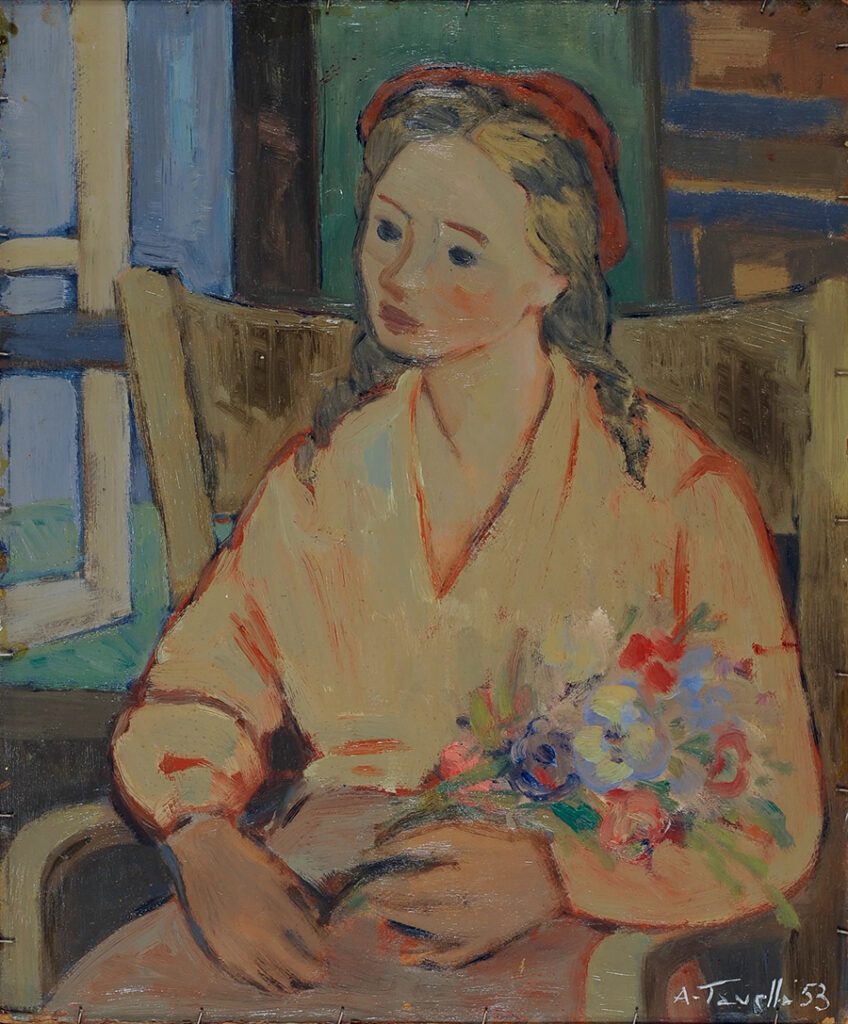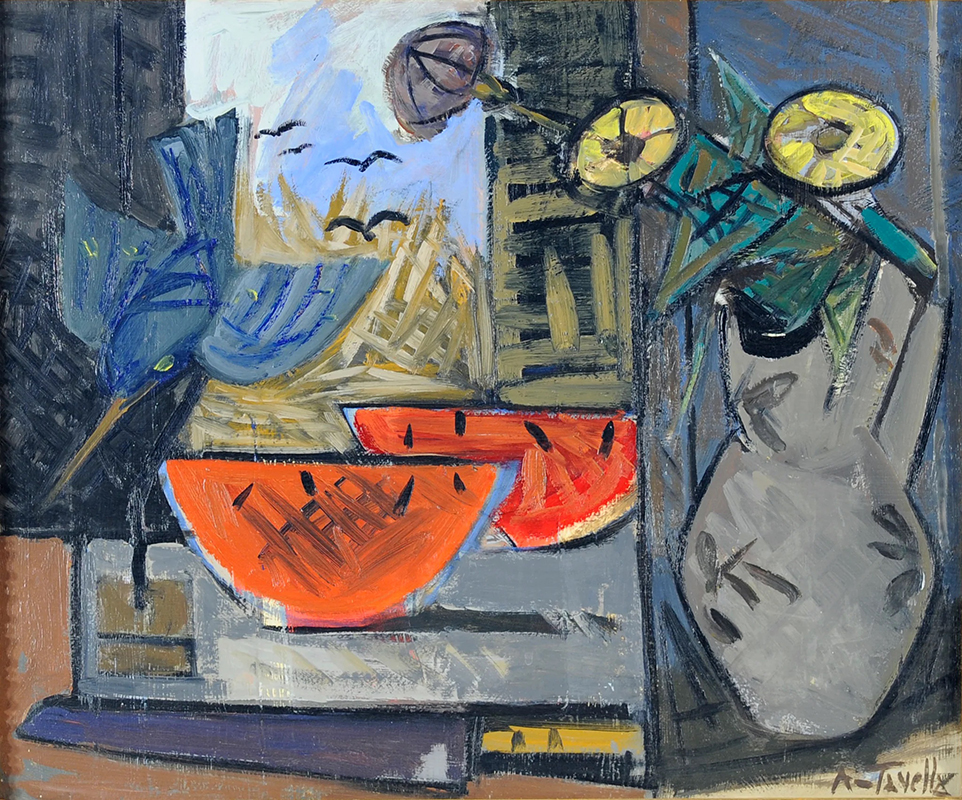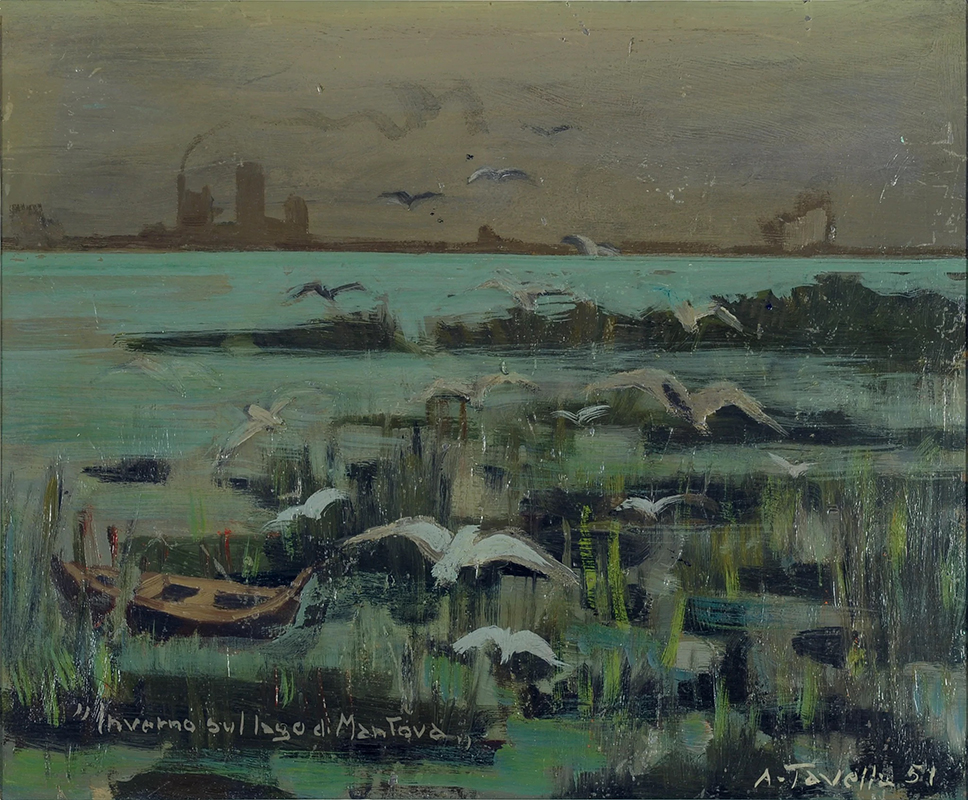Aldo Tavella: poems of life
by Eva SchiratoIf we were to ask ourselves what is the only way in which a man can leave a trace of himself, the only valid answer to this question would be: "through the works he had the ability to create". If we asked ourselves what is the only way in which a man can continue to live even after his death, the only valid answer to this question would be: "by awakening memories and arousing emotions". Aldo Tavella has this ability, he was a poet in the Nietzschean sense of the term: capable of creating his own language, of expressing himself through it, and of making it understandable and usable not only to his contemporaries but also to posterity.

The work conveys a sense of tranquility and well-being, harmony is rendered through a palette in which the soft colors of the girl and the background frame the more vivid and bright ones of the bouquet of flowers. The tones of spring become a metaphor for an age, youth, in which every feeling is amplified, in which the fragility of a soul that is not yet adult is masked by the blossoming of new forms, in which reality no longer seems to have limits or borders but only eternally open spaces which, like that door in the background, allow access to new experiences and new opportunities.
This one's face Girl with bouquet of flowers, framed by blonde curls that fall on her shoulders, is a showcase of emotions: the attentive and interested eyes, the flushed cheeks, the lips that seem to announce a smile. Every element of the painting exudes the vitality of an age that flees and never returns.
 Still life Flowers, Watermelon and Woodpecker it makes us participate in a cloudy summer day that anyone would try to resist by staying at home with the balconies closed and eating fresh watermelon. The room is lit from the back, where a window has been left open to allow air to circulate from the shaded side of the house: this frame shows us a glimpse of nature scorched by the lion sun.
Still life Flowers, Watermelon and Woodpecker it makes us participate in a cloudy summer day that anyone would try to resist by staying at home with the balconies closed and eating fresh watermelon. The room is lit from the back, where a window has been left open to allow air to circulate from the shaded side of the house: this frame shows us a glimpse of nature scorched by the lion sun.
If sunlight is generally associated with the prosperity of life, in this painting this concept is overturned: the interior of the house rendered with a cold color palette represents the much hoped for shelter for the woodpecker who, in flight, seems to take shelter in the cool of the home, leaving behind the suffocating heat of the countryside. The bright colors of the watermelon slices and the flowers on the dining table indicate the fruits of a season that is coming to an end: the woodpecker, which passes them, therefore becomes a metaphor for the passing of time and the seasons, of the transition from warm tones and bright ones of the summer to the dull ones of the cooler months that will follow it.
Following the story of this work we understand that the artist does not consider us as simple spectators of a scene of country life but wants to make us protagonists of his reflection: we are subject to the inexorable flow of a time that marks the moments of nature of which we are part of it, which is cyclically born and then allowed to die.
 While the squawking birds take to the skies in search of warmer places to spend the winter and men get busy in the large concrete buildings, on the horizon everything else has stopped.
While the squawking birds take to the skies in search of warmer places to spend the winter and men get busy in the large concrete buildings, on the horizon everything else has stopped.
The rushes, once bright green, are now dry, the little boat, used for fishing in the summer, is now abandoned among the remaining patches of vegetation. An aura of mystery envelops the painting: the mist allows us to glimpse only gray silhouettes on the horizon, where long trails of black smoke are lost in the cold air of this winter day. The flight of birds towards a destination hidden from us alludes to the impossibility in the long years marked by the War, to imagine the return of a physical and thought freedom, suffocated for a long time, which now stands proud and can travel without limits and borders.
Winter on Lake Mantua tells of a season which, like those years which were the darkest in contemporary history, is fertile ground for the blossoming of new life perspectives, previously unimaginable, towards which we may be uncertain, but which inexorably await us.
Aldo Tavella's production is a journey into the mind and places that marked the artist's growth not only as a man but also as a poet. He managed, and still manages today, to excite those who stop in front of his works, because his is a transparent painting that reflects his experience, and like an open book it makes it easy for the viewer to identify with and understand interpretation.
